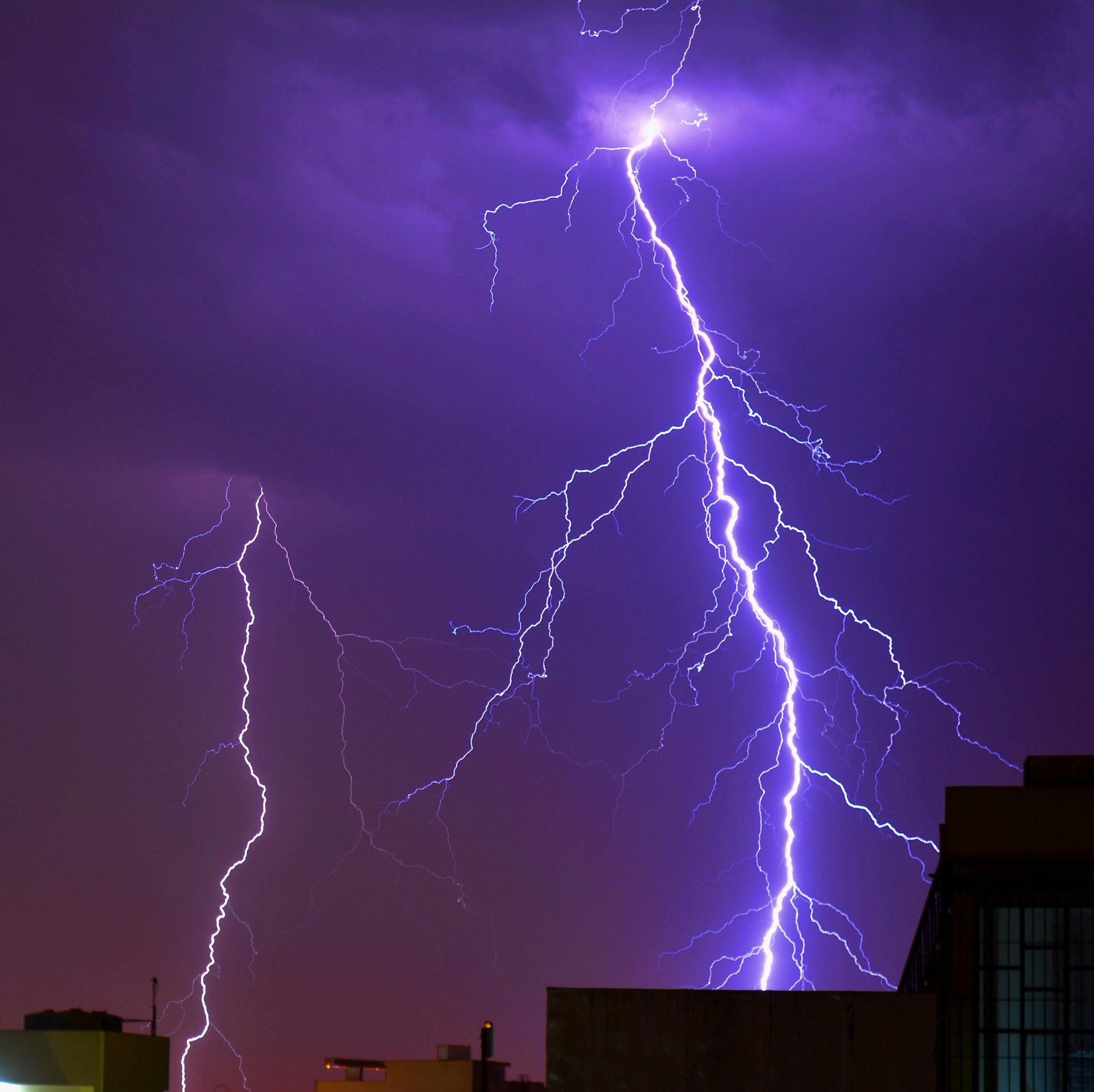The Rain and the Umbrella
How to Manage Emotional Storms with ADHD
Do you draw strength from social interaction or solitude?

When you think of an introverts personality trait do you think of shyness or social anxiety? If you do you’re not alone. However, it’s much more than that. Introverts are people who draw their energy from within themselves rather than from social interaction. They tend to be introspective, thoughtful, and reserved, preferring to spend their time alone or with a few close friends rather than in large groups.
One of the strengths of introverts is their ability to concentrate deeply and think creatively. They often have a rich inner world of thoughts and ideas, and they can focus for extended periods of time on their work or hobbies. This attribute makes them great writers, artists, researchers, and scientists. Introverts are often very self-aware and reflective, which can help them to understand their own emotions and motivations better.
Another strength of introverts is their ability to listen deeply and empathetically. They tend to be more observant and less likely to interrupt, which makes them great listeners. This ability to listen and understand others' perspectives can help them build deeper relationships and connections with others. While introverts may not enjoy small talk or socializing in large groups, they often excel at one-on-one conversations and can be very engaging and interesting when they do speak up.
Introverts also tend to be very independent and self-sufficient. They are comfortable with their own thoughts and feelings and do not require constant external stimulation. They can spend time alone without feeling bored or anxious, and they often have a rich inner life that keeps them occupied. This attribute makes them great problem-solvers and thinkers, as they are not afraid to tackle complex issues and puzzles on their own.
introverts gain strength through isolation in a way that is different from extroverts. While extroverts may feel energized by social interaction and external stimulation, introverts often feel drained by it. Instead, introverts find strength and energy by spending time alone or engaging in solitary activities. This time allows them to recharge and focus their energy on their own thoughts and projects, which can lead to great creativity and innovation.
In relationships, introverts and extroverts can sometimes experience communication and understanding challenges due to their differing needs for social interaction and alone time. Extroverts may crave more social activities and may not understand their introverted partner's need for solitude and introspection. Conversely, introverts may struggle to communicate their need for alone time without hurting their extroverted partner's feelings. However, it is important to understand and appreciate each other's strengths and differences. Extroverts can encourage their introverted partners to engage in social activities while also understanding and respecting their need for alone time. Similarly, introverts can help their extroverted partners to slow down and appreciate quieter moments while also understanding and respecting their need for social interaction. By acknowledging and complementing each other's strengths, introverts and extroverts can build strong and fulfilling relationships
Being an Introvert is a unique and valuable personality trait that should be understood and celebrated. Introverts have many strengths, including their ability to concentrate deeply, listen empathetically, be self-sufficient, and gain strength through isolation. By recognizing and valuing these strengths, we can create a more inclusive and supportive world for all personality types.
what Matters Most

Have you ever had one of those moments where your brain feels like a thunderstorm—wild, chaotic, and then suddenly lit up by a lightning bolt so bright it stops you in your tracks? If you’ve got ADHD, I’m betting you know exactly what I mean. When you’re locked in and unstoppable, those electric bursts of energy are what I call the "lightning" of ADHD. They’re thrilling, right? But they can also vanish as fast as they strike, leaving you wondering how to hold onto that magic. Well, grab a cozy spot and stick with me—today, we’re diving into Chapter 5 of Harnessing the Storm, "Lightning and the Lightning Rod," to figure out how to catch that lightning and make it work for you. Spoiler: it’s less about fighting your brain and more about working with it, and I can’t wait to share how. Let’s paint a picture: You’re sitting there, maybe avoiding something boring like folding laundry, when—ZAP!—an idea hits. It’s brilliant. You’re buzzing, diving into a project with laser focus, and you’re a force of nature “for a little while.” That’s hyper-focus, one of ADHD’s hidden gems. In Chapter 5, I liken it to lightning because it’s intense, fleeting, and downright powerful. But here’s the catch—just like a real storm, it doesn’t always stick around. One second, you’re deep in the zone, and the next, you’re distracted by a shiny object or lost in a daydream about tacos. I’ve been there more times than I can count. For years, I’d get frustrated when those bursts faded before I could finish anything. Then it hit me: that lightning isn’t a glitch—it’s a gift. We just need a way to channel it. So, how do we catch it? That’s where the "lightning rod" comes in—a tool to grab and direct that raw energy somewhere useful. Think of it like this: researchers, like those at the Cleveland Clinic, say hyper-focus happens when something grabs your interest so hard that your brain tunes out everything else (Cleveland Clinic, 2023). It’s why you might lose hours to a video game or a passion project but struggle to care about spreadsheets. In the book, I share a story about my buddy Sam, who’s got ADHD and a love for building model trains. He’d get these wild ideas for intricate designs, but they’d fizzle out fast. Then he tried what I call the "Capture and Contain" trick. Step one: capture the lightning. When inspiration hits, scribble it down—notebook, phone, napkin, whatever’s handy. Sam started sketching his train layouts the moment they sparked. Step two: contain it. Pick one tiny next step—like “Spend 20 minutes tomorrow gathering supplies”—so that burst doesn’t just drift away. Now, Sam’s got a shelf full of finished models, and he’s beaming with pride. You can do this, too, whether it’s a creative idea, a work goal, or something that just lights you up inside. Here’s the heart of it: those lightning moments aren’t just about productivity—they’re a clue to who you are. Experts like Dr. Russell Barkley point out that ADHD brains thrive on dopamine, that feel-good chemical tied to reward and motivation (Barkley, 2015). When you hyper-focus, it’s often on stuff that feeds your soul—things that excite or challenge you. For me, it’s writing—like pouring my thoughts into this post for you. What’s it for you? Maybe it’s music, fixing things, or dreaming up big ideas. That’s your lightning rod’s sweet spot. You can carve out more space for it by noticing what triggers your hyper-focus. Imagine saying, “Hey, this thing I love? I’m going to make it happen more.” That’s not just managing ADHD—that’s turning it into your superpower. And don’t worry if it feels messy at first. Hyper-focus can be a double-edged sword—amazing when it works, tricky when it doesn’t. WebMD notes that while it can lead to incredible bursts of creativity, it might also mean losing track of time or neglecting other stuff (WebMD, 2023). That’s why your lightning rod needs a little structure. Try setting a timer to keep your bursts in check, or pair them with a reward—like a snack after an hour of focus. I once got so caught up writing that I forgot to eat all day—lesson learned! Now, I set a little alarm to nudge me back to reality. It’s not about taming the storm; it’s about guiding it so you don’t burn out. So, don't let the lightning slip through your fingers next time it strikes. Catch it, channel it, and let it fuel something incredible. You’ve got a storm in you, sure—but it’s a gorgeous, powerful one. Want more ideas like this? Flip through Harnessing the Storm or swing by our crew at www.itswhatmattersmost.com. I’d love to hear what your lightning looks like—drop me a note or leave a comment. Let’s harness this storm together, okay?
what Matters Most

Have you ever had one of those moments where your brain feels like a thunderstorm—wild, chaotic, and then suddenly lit up by a lightning bolt so bright it stops you in your tracks? If you’ve got ADHD, I’m betting you know exactly what I mean. When you’re locked in and unstoppable, those electric bursts of energy are what I call the "lightning" of ADHD. They’re thrilling, right? But they can also vanish as fast as they strike, leaving you wondering how to hold onto that magic. Well, grab a cozy spot and stick with me—today, we’re diving into Chapter 5 of Harnessing the Storm, "Lightning and the Lightning Rod," to figure out how to catch that lightning and make it work for you. Spoiler: it’s less about fighting your brain and more about working with it, and I can’t wait to share how. Let’s paint a picture: You’re sitting there, maybe avoiding something boring like folding laundry, when—ZAP!—an idea hits. It’s brilliant. You’re buzzing, diving into a project with laser focus, and you’re a force of nature “for a little while.” That’s hyper-focus, one of ADHD’s hidden gems. In Chapter 5, I liken it to lightning because it’s intense, fleeting, and downright powerful. But here’s the catch—just like a real storm, it doesn’t always stick around. One second, you’re deep in the zone, and the next, you’re distracted by a shiny object or lost in a daydream about tacos. I’ve been there more times than I can count. For years, I’d get frustrated when those bursts faded before I could finish anything. Then it hit me: that lightning isn’t a glitch—it’s a gift. We just need a way to channel it. So, how do we catch it? That’s where the "lightning rod" comes in—a tool to grab and direct that raw energy somewhere useful. Think of it like this: researchers, like those at the Cleveland Clinic, say hyper-focus happens when something grabs your interest so hard that your brain tunes out everything else (Cleveland Clinic, 2023). It’s why you might lose hours to a video game or a passion project but struggle to care about spreadsheets. In the book, I share a story about my buddy Sam, who’s got ADHD and a love for building model trains. He’d get these wild ideas for intricate designs, but they’d fizzle out fast. Then he tried what I call the "Capture and Contain" trick. Step one: capture the lightning. When inspiration hits, scribble it down—notebook, phone, napkin, whatever’s handy. Sam started sketching his train layouts the moment they sparked. Step two: contain it. Pick one tiny next step—like “Spend 20 minutes tomorrow gathering supplies”—so that burst doesn’t just drift away. Now, Sam’s got a shelf full of finished models, and he’s beaming with pride. You can do this, too, whether it’s a creative idea, a work goal, or something that just lights you up inside. Here’s the heart of it: those lightning moments aren’t just about productivity—they’re a clue to who you are. Experts like Dr. Russell Barkley point out that ADHD brains thrive on dopamine, that feel-good chemical tied to reward and motivation (Barkley, 2015). When you hyper-focus, it’s often on stuff that feeds your soul—things that excite or challenge you. For me, it’s writing—like pouring my thoughts into this post for you. What’s it for you? Maybe it’s music, fixing things, or dreaming up big ideas. That’s your lightning rod’s sweet spot. You can carve out more space for it by noticing what triggers your hyper-focus. Imagine saying, “Hey, this thing I love? I’m going to make it happen more.” That’s not just managing ADHD—that’s turning it into your superpower. And don’t worry if it feels messy at first. Hyper-focus can be a double-edged sword—amazing when it works, tricky when it doesn’t. WebMD notes that while it can lead to incredible bursts of creativity, it might also mean losing track of time or neglecting other stuff (WebMD, 2023). That’s why your lightning rod needs a little structure. Try setting a timer to keep your bursts in check, or pair them with a reward—like a snack after an hour of focus. I once got so caught up writing that I forgot to eat all day—lesson learned! Now, I set a little alarm to nudge me back to reality. It’s not about taming the storm; it’s about guiding it so you don’t burn out. So, don't let the lightning slip through your fingers next time it strikes. Catch it, channel it, and let it fuel something incredible. You’ve got a storm in you, sure—but it’s a gorgeous, powerful one. Want more ideas like this? Flip through Harnessing the Storm or swing by our crew at www.itswhatmattersmost.com. I’d love to hear what your lightning looks like—drop me a note or leave a comment. Let’s harness this storm together, okay?


